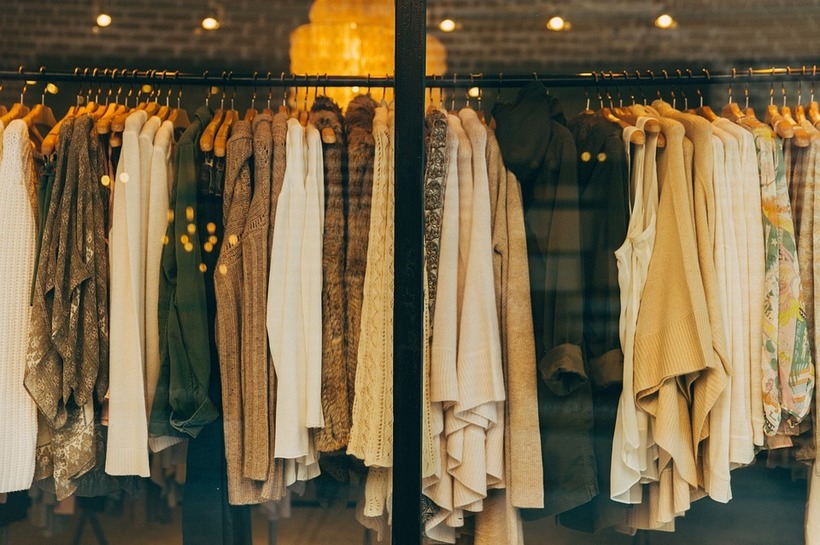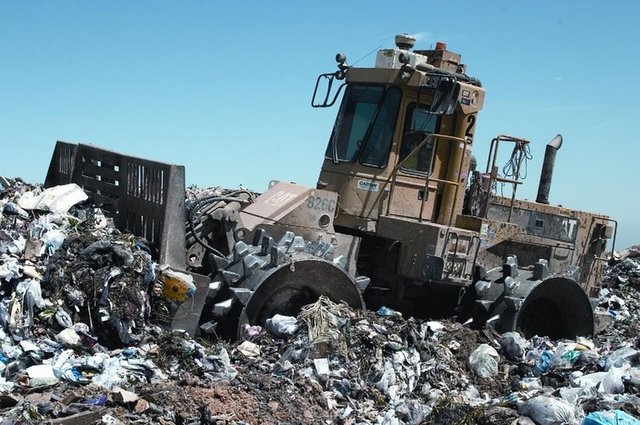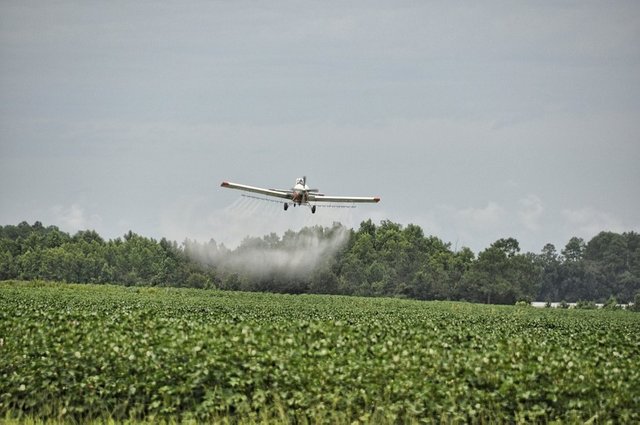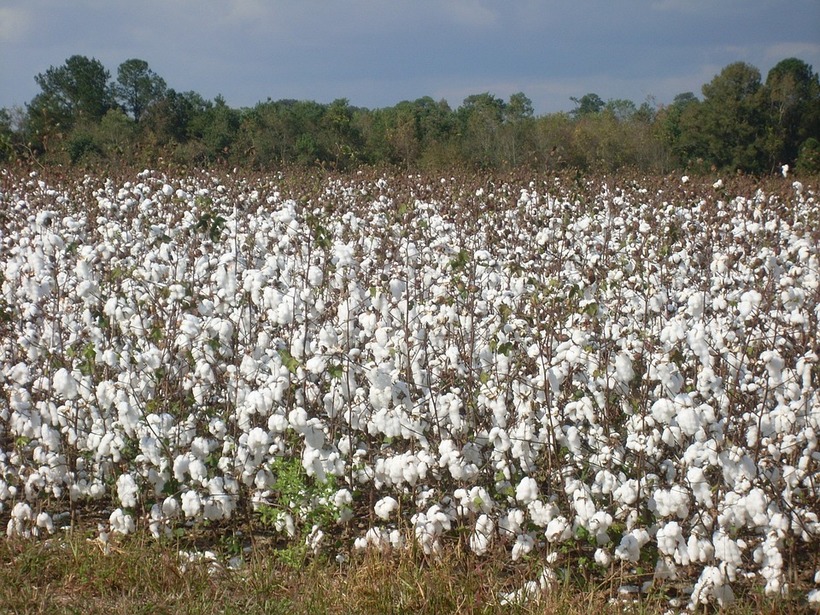The cost of fast fashion


If there’s one thing my mom successfully hammered into my brain growing up, it’s the importance of saving money.
“If you don’t need it, then don’t buy it,” she would say.
Whenever I did need something, I was taught to scout around until I found the cheapest price possible. This applied to everything from groceries and school supplies, to shoes and clothes.
Until about two years ago, I’d mostly held on to that mindset and never thought twice about grabbing $7 tops and $12 jeans off the racks and shelves at stores like Forever 21 and Ross every once in awhile. But in November of 2015, after doing some research about the textile industry for an article on my travel blog, I immediately decided to toss my mom’s philosophy about saving money as much as possible to the gutter: it turns out that the environmental and humanitarian costs of the apparel industry are horrifying.

ENVIRONMENTAL IMPACT
Every year the United States throws away 13.1 million tons of textiles. By comparison, that’s the equivalent weight of over 7 million 2016 Toyota Camrys or more than 26,800 Boeing 747 aircrafts. It’s an enormous amount of waste, but what makes it even worse is that textiles typically contain hazardous chemicals, including formaldehyde, which you may have heard is used to preserve dead animals. Most of these fabrics aren’t biodegradable, so when they make it into landfills, they sit there for 200 years or more while releasing toxic fumes into the air. On top of that, the textile industry is the second dirtiest in the world (trailing just behind the oil industry) and the second largest polluter of water: because of lax regulations, companies are allowed to discharge wastewater into rivers. Textiles used by big brand name clothing companies typically contain man-made chemicals called nonylphenol ethoxylates (NPEs) and nonylphenols (NPs), which can’t completely break down. This, in turn, adversely affects aquatic systems because NPEs and NPs are toxic to fish, aquatic plants, and other life underwater.


Apart from polluting water, the industry also has harmful effects on land.
These days the fashion industry has “micro seasons” where new trends are released in stores as quickly as every week. They’re usually pretty affordable so it doesn’t hurt your pocket much to stay up to date on the latest styles. This model of getting new trends into stores immediately is what’s known as fast fashion, and it has increased our demand for and consumption of clothing, about half of which is made with cotton.
To cope with this rise in consumption, farmers are left with the task of producing the amount of cotton demanded and many have resorted to genetically modified crops to increase their yields. Along with GM cotton comes the use of harmful pesticides and petroleum-based fertilizers that exhaust the earth.


HUMANITARIAN COSTS
The consequences don’t stop there, though. In addition to destructive environmental impacts, fast fashion comes at a steep humanitarian price tag.
On Nov. 16, 2016, the LA Times published an article about Los Angeles factory workers who earn $4.50 per hour for making clothing for large retailers including Ross Dress for Less, Forever 21, and TJ Maxx. Because these retailers don’t directly employ these workers, they aren’t legally responsible for any labor violations that occur at the factories.
The retailers do, however, set the rates they pay manufacturers, who are forced to suppress wages to maintain their operations.
It’s astounding that exploitation like this can occur in a state where the minimum wage is $10.50 per hour. How are people supposed to live on such meager wages?
In the United States, most clothes sold aren’t even made in the country. More than 95 percent of labor is outsourced to other countries, primarily China and Bangladesh. In China, workers make $2 to $3 per day, while in Bangladesh, the minimum wage for garment workers is less than $70 per month.
If you haven’t yet seen the documentary “The True Cost,” I strongly suggest taking 1 hour and 32 minutes to do so. It's on Netflix and it shows the horrendous working conditions of garment workers in developing countries, including India, Cambodia, and Bangladesh, including how manufacturers disregard safety regulations as a means of keeping prices low for retailers. As a result, there have been a number of accidents at garment factories that have taken the lives of hundreds of people. In 2013, a building collapsed in Rana Plaza in Bangladesh killing more than 1,000 people; in 2012, another Bangladesh factory caught fire and left over 100 people dead; in November 2016, a fire in a garment factory in India killed 13 workers.
WHAT YOU CAN DO
There’s so much more to know about the disastrous repercussions of the clothing industry, including the health effects of conventional fabrics on consumers who wear them, as well as on those who work in garment factories and live in the surrounding areas. If you’re concerned about the environmental, humanitarian, and health consequences of the textile industry, perhaps the most important and immediate action you can take to combat the problem is to learn about how the fast fashion industry operates and how clothes are made.
Do some research on the brands you buy, and note that just because certain brands are more expensive doesn’t mean they’re more ethical. See where these companies employ their workers and what kinds of materials they use to make their clothes.
Since discovering just how harmful and dirty the clothing industry is, I’ve committed to phasing out the fast fashion pieces in my wardrobe and replacing them with eco-conscious and responsibly produced clothes. It’s a process, of course, particularly because I don’t make a whole ton of money.
I’m not saying I’ve absolutely boycotted these companies, though, because sometimes that’s what I’m able to afford in certain situations. Since I made this commitment, I’ve actually been guilty of making a few purchases from fast fashion companies when I needed a last minute outfit. But whenever I can help it, I opt not to give my money to a multimillion-dollar industry that bastardizes the planet and other human beings, even if that means hanging on to a few run down outfits for a little longer until I can afford to make purchases from more responsible companies (like when they have sales).
My current favorite clothing lines are Pact Organic, LA Relaxed and Threads for Thought, though I’m still in the process of finding other responsible apparel and shoe companies to diversify my closet. If you’re interested, blogger Natalie Kay from Sustainably Chic is a good resource for more ethical brands to support. And if you have any suggestions, feel free to let me know in the comments.


I realize everyone has different financial situations, so for some people, purchasing responsibly produced tops that cost $25 isn’t feasible. If that’s the case for you, that’s okay. If you care enough to take steps to help address this problem, something to consider doing is purchasing clothes less frequently and informing others about the dire consequences of the apparel industry.
If you can afford to support more responsible companies, I urge you to consider directing your wardrobe dollars toward them. As consumers, we have the power to reject merchandise from businesses that don’t align with our values, those that show little respect for the planet we live on, and those that treat others with less respect all for the sake of maximizing profits.
Hi @agnesconstante, great post. I personally try to buy as much of my clothing as possible second hand from charitable organizations like St. Vincents and Goodwill - would much rather both save money and see the money that I do spend on clothes doing good in the local community.
I appreciate the effort you put into formatting this post so beautifully, but I have to ask why you are using shortened bit.ly links when you are already couching the links in HTML - it will actually make people much less likely to click on your links doing them this way because you can't see where you are headed before clicking on the link. There are scammers going around on Steemit using shortened links to malware infected sites.
Very happy to have found you - following and glad you are posting here on Steemit now! Cheers - Carl
Thanks, @carlgnash! And thanks for the heads up about the shortened links - definitely not trying to scam people! I wrote this up some months ago and didn't bother to change the links, but I've put in the full URLs now so people can see where they're clicking. Great to connect with you & following you now as well!
Awesome! To be clear, I definitely didn't get the feeling you were trying to scam anyone ;)
You are a great poster super happy you are here Steeming! Rock on - Carl
This post has caught the eye of @MuxxyBot and has been nominated by the curation team. If chosen it will feature in a curation post by @MuxxyBot. An image from your post may be featured.
Please reply to this comment if you accept or decline.

I accept!
Thank you for coming back to the blockchain and making yet another amazing post! I am seriously so happy I discovered your post. Keep up the amazing quality content, and you are sure to be noticed by many and develop a real following on here in no time!
I mean, it will still take some time, obviously, but if you keep posting great content like this and you engage the community more by joining the Discord servers and chatting around a bit whenever you can, getting to really know people on the blockchain, I am absolutely certain that you will experience true success on this amazing platform.
I look forward to reading more of your posts in the future! Please come back often :)
Thank you!! :)
I think about the cost of clothing in the context of lifetime cost. If I buy a pair of jeans, how long can I wear those jeans for? I have no problem spending a bit more if it will last a lot longer. That brings the lifetime cost down. In doing that, it also decreases significantly the environmental toll. In most cases it means better craftsmanship also, which usually comes from better paid employees that take pride in their work.
It also means I wear the same clothing a lot longer than most people do, so I'm not keeping pace with fast fashion at all.